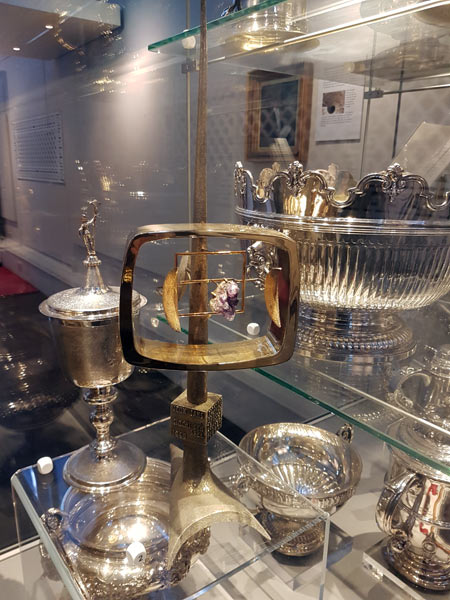|

For the first time since Jeux Sans Frontières commenced in 1965, this
year's events commenced not with the winter series Interneige, which
closed its doors temporarily after the 1968 season, but with the British Domestic series.
Interneige would return in 1976.
In the British Domestic series, referee Eddie Waring was promoted to
co-presenter alongside David Vine. Arthur Ellis - a former English and World
Cup football referee - assumed the role of main referee on the series, a
position he held for the next 14 years.
It was decided to run a qualifying competition for the first It's A
Knockout to be held in Northern Ireland, and these two events were
sponsored by local government. Eleven teams from the six counties of the
province fought it out for the two spots in
the televised heat, with the top team from each of the Qualifying Heats
fighting it out for the coveted Jeux Sans Frontières qualification.
Neither of these qualifying programmes had any BBC input and were therefore
never recorded or transmitted. Interestingly, both heats were held at exactly
the same time to ensure that each result was not known until both competitions
had been staged.
In Europe, the Flemish broadcaster BRT joined forces with French language RTB
to bring dual language commentary to Belgian viewers. Their initiation was to
host the first international heat of the year - from the beautiful Flanders
city of Brugge. It proved to be a fraught experience.
The animated opening sequence used for Jeux Sans Frontières this year
introduced each country individually using national stereotypes. Belgium was
portrayed as twins (as BRT joined this year) with car travel and accuracy,
Switzerland with skiing and train travel, West Germany with sporting and
leisure activity, Great Britain with the city gent and the double-decker bus
and Italy with music and gondoliers. This sequence would be used again in 1970
with additional sequences to introduce France and the Netherlands and a
different arrangement of the theme music.
After a year without the programme being transmitted in France (although
French teams had participated), the ORTF decided to take a year out from the
competition to recover from the fallout of the 1968 national and social
crisis. With no new entrants, the series was reduced to just five countries.
The main scoreboard this year was manually operated and
the leading teams were displayed in position order after each game (as it was
in the 1980s). Each of the seven name-places was made up of a roller which had
all seven teams’ names printed on it along with the ident letters of the
country represented, so that each of the teams could be displayed at any of
the seven positions, despite its position and score. Jokers were displayed on
the scoreboard as small white boxes next to the running total of the team, as
opposed to later series when these were replaced by an ‘X’.
As from this year, Jokers were only permitted to be played on
standard games and all teams missed out one game each in the
heats and played the 'Jeu Intermédiaire'
(the forerunner to the Fil Rouge) which was introduced this year,
immediately afterwards.
As with the Fil Rouge that featured in both the Belgian heat and the
International Final of the 1968 series,
it was a game that was played individually between each of the other games by
the team that had missed out the previous main game.
| |
 |
|
Shrewsbury's
Golden Trophy is on display in the town's Museum and Art Gallery
Image © Neil Storer |
| |
Back on the home front, there was good news for fans in Great Britain.
Shrewsbury became the first British team to win the Jeux Sans Frontières
International Final, albeit sharing the first place with West German team
Wolfsburg - the country’s fourth consecutive Golden Trophy win. |